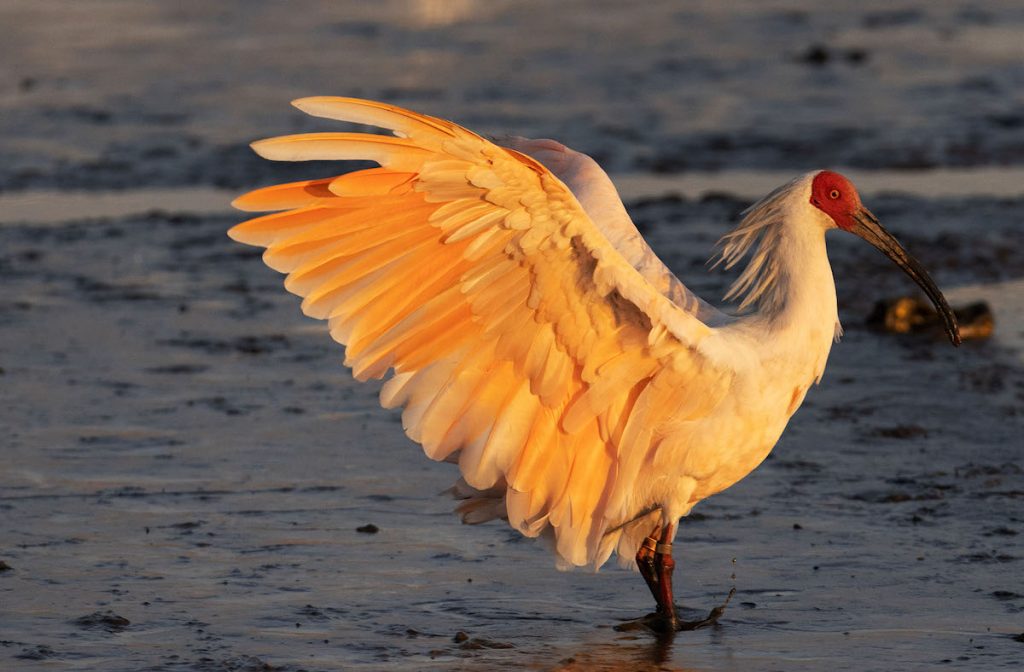このページを 日本語 で読む
On September 29, artificially bred crested ibis, called toki in Japanese, were released into the wild on Sado Island for the 29th time. Sado, part of Niigata Prefecture, provides a wealth of natural habitats.
After the crested ibis went extinct in Japan, birds were received from China to breed. A program to release the bird back into the wild has been ongoing over the past 15 years.
The 29th Release
Different methods are employed to release birds. One is the hard release, where the ibis are placed in a box and brought to a release site after acclimatization training is completed.
Another method is the soft release. Birds that have been trained to catch food and fly are put in cages. The cages are placed in the target habitat with the door left open so the birds can come out on their own and fly away.
The most recent release employed both hard and soft approaches. On September 29, ten birds were released by hard release in the hamlet of Akadama on the southeastern side of Sado Island. Akadama is said to have been the ibis' last remaining habitat on the island prior to the species' extinction in the wild. Ibis had yet to resettle there.
The birds were released in two rounds of five boxes each. When the boxes were opened, the crested ibis flew away without much of a wait.
I have photographed releases before. I am usually too focused on capturing the shot to focus on my emotions. But afterward, my thoughts were full of hope that the birds would adjust to the new environment and settle in well.
Soft Release
A soft release was also conducted. Crested ibis were placed in acclimation cages at the Sado Japanese Crested Ibis Conservation Center and not fed from the day before release. The idea was to encourage the hungry birds to go outside to the nearby pond to feed.
The ibis were seemingly hesitant to leave their accustomed homes and venture into a strange new world. On October 6 at 6:00 am, the cages were opened. One of the five birds went outside that evening, but the other four did not venture out until the morning of October 7, with the release spanning two days.
Birds released via the soft approach tend to settle on fields near the acclimation cages. Accordingly, hard releases in other locations were also carried out to diversify the birds' habitats.
Season of Beautiful Feathers
Did you know that the "toki-iro" beautiful pink and orange-hued plumage of the endangered crested ibis can only be seen for about three months from late September to December?
During its January to June breeding season, the ibis secretes a black substance from its neck, coating its body. The bird then molts, losing its feathers between June and September.
Only in autumn during the roughly three months prior to the next breeding season does the ibis reveal its brightly colored plumage.
A Gift
I help out on a farm and mow footpaths between rice paddies. Occasionally, I come across a crested ibis feather in or between the rice paddies. Finding a feather feels like a gift from the crested ibis and fills me with joy.
Crested ibis feathers are used to decorate the hilt of the Sugari no Ontachi, a sacred sword and a part of the ceremonial rebuilding of the Ise Grand Shrine held every 20 years. The feathers have a made a special contribution to Japanese culture.
The crested ibis is protected under the Act on Conservation of Endangered Species. This means that while picking up fallen feathers is allowed, giving them to others or selling them is prohibited. Punishments involve imprisonment for up to five years or fines of up to five million yen.
As a photographer who has pursued many a subject, I am fascinated by the color of the crested ibis. I embrace the challenge of capturing this bird's beauty.
Click here to read more Sado Wildlife in Focus photo essays by photojournalist Fumie Oyama.
Fumie Oyama is a two-time winner of the Japan Newspaper Publishers & Editors Association Award as a photographer for the Sankei Shimbun. After covering the reintroduction of the crested ibis to the wild for 11 years, Oyama left the company in 2020 to move to Sado Island. There, he continues to photograph the ibis and other wildlife while engaging in farming. He currently promotes the charms of Sado Island as a photojournalist. Follow Fumie Oyama on Instagram.
このページを 日本語 で読む
